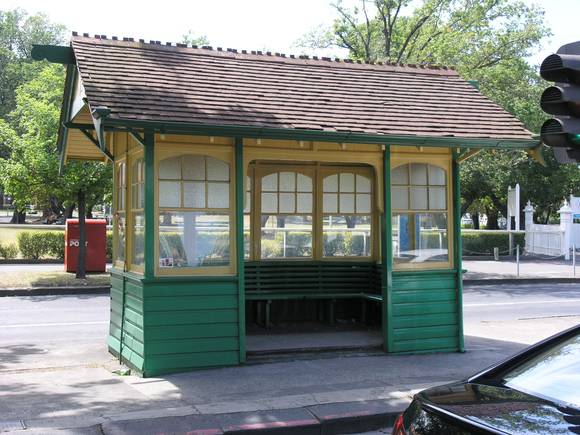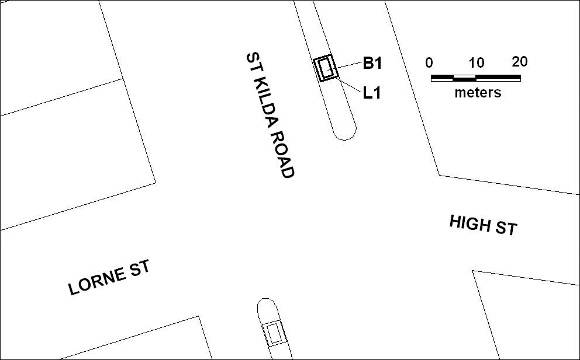| Back to search results » | Back to search page » |
|
TRAM SHELTER
LocationST KILDA ROAD AND HIGH STREET MELBOURNE, MELBOURNE CITY
File NumberHER99000262LevelRegistered |
|
Statement of Significance
What is significant?
In the early years of the twentieth century the cable tram network of inner Melbourne, which had been built in the 1880s, was augmented by an electric tram network built and operated by municipal tramways trusts in the various expanding suburbs. The tram shelter at the corner of St Kilda Road and Dorcas Street South Melbourne is one of five remaining from of a distinct group of nine picturesque closed timber shelters built between 1912 and 1927 in a style based on Edwardian domestic fashion.
The tram shelters at the corner of St Kilda Road and High Street and St Kilda Road and Lorne Street were built in 1927. They replaced earlier shelters erected by the Prahran and Malvern Tramways Trust in 1913 and 1919. The shelters served passengers making the connection between the St Kilda Road cable trams and the departure point of the electric cars on P&MTT High Street route. The provenance of High Street corner shelter is not certain, but it may be the same as the Lorne Street shelter opposite, which was designed by architect AG Monsbourgh for the Melbourne and Metropolitan Tramways Board. The design is heavily derivative of the earlier shelters of the same type.
The front wall of the shelter facing the tram stop is half open. The timber framed shelter is clad externally to sill height in horizontal weatherboards and internally in vertical v jointed lining boards. Similar boards cover the ceiling. The floor is the concrete slab upon which the shelter stands. The benches are of timber frames and slats. The upper halves of timber framed windows are in multi paned patterned translucent glass with a segmental arch head. Vertical boarding is continued between the frame members above window head height. The gable section of wall is clad in vertical slats spaced to give ventilation. The gable roof is clad in terracotta shingles with a crested terracotta ridge. The rafters are exposed under the projecting eaves with a spaced board lining above. The gables project a similar distance to the eaves and are supported on timber brackets with vertical infill. The upper section is filled with a horizontal board at ceiling height to match the barges and an infill of vertical spaced boards. This shelter shows more detailing than the St Kilda Road/Lorne Street shelter diagonally opposite, including scrolled carving of the projecting ridge beam and an upturn hiding the end of the gutter on the barge board ends.
How is it significant?
The tram shelter at the corner of St Kilda Road and High Street Melbourne is of historical and architectural significance to the State of Victoria.
Why is it significant?
The tram shelter at the corner of St Kilda Road and High Street Melbourne is of historical significance for its association with the cable tramway network that played an important part in the history of transport in Melbourne. It is also significant for the part it played in the history of the link between the cable and electric tramway systems, as it was located for customers waiting to transfer between the Prahran and Malvern Tramways Trust electric line on High Street and the Tramway Boards St Kilda Road cable tramway.
The tram shelter at the corner of St Kilda Rd and High Street Melbourne is of architectural significance as one of only five remaining tram shelters from the city cable tram network which were designed as picturesque pavilions in the domestic Edwardian style of the period. The tram shelter is also of architectural significance as an important example of early twentieth century street architecture.
Group
Transport - Tramways
Category
Tramway Station/Waiting shed






